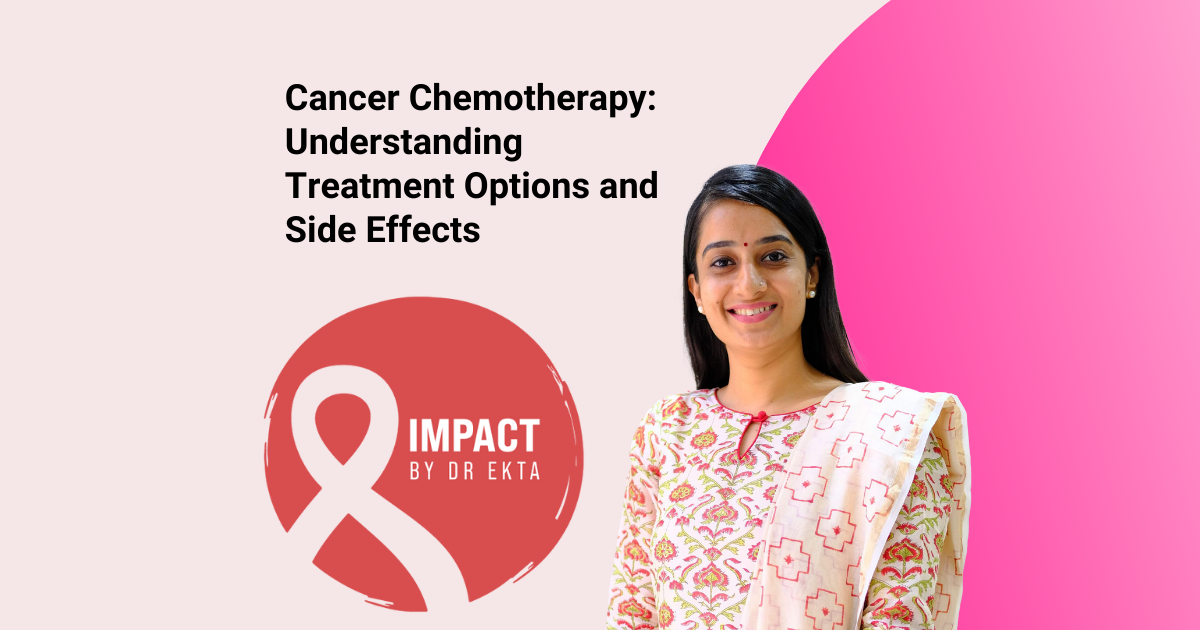As an oncologist, I have seen firsthand the profound impact cancer can have on patients and their families. One of the most common treatments for cancer is chemotherapy, a powerful tool in our fight against this disease. However, the journey through cancer chemotherapy can be challenging and often filled with uncertainties. In this blog, I aim to provide a comprehensive understanding of cancer chemotherapy, its treatment options, and the side effects patients may encounter.
What is Cancer Chemotherapy?
Cancer chemotherapy involves the use of drugs to destroy cancer cells. These drugs work by targeting and killing rapidly dividing cells, which include cancer cells. However, because chemotherapy drugs cannot distinguish between healthy cells and cancer cells, they can also affect normal, fast-growing cells in the body, leading to various side effects.
Chemotherapy can be used in different ways depending on the type and stage of cancer. It can be administered as the primary treatment, before surgery or radiation to shrink tumors (neoadjuvant chemotherapy), after surgery or radiation to kill any remaining cancer cells (adjuvant chemotherapy), or to relieve symptoms in advanced stages of cancer (palliative chemotherapy).
Types of Cancer Chemotherapy
There are several types of cancer chemotherapy, each with its unique approach and mechanism. Understanding these can help patients make informed decisions about their treatment.
- Alkylating Agents
Alkylating agents work by damaging the DNA of cancer cells, preventing them from multiplying. These drugs are effective against a wide range of cancers, including leukemia, lymphoma, and solid tumors. Common examples include cyclophosphamide, ifosfamide, and melphalan. - Antimetabolites
Antimetabolites interfere with the DNA and RNA synthesis of cancer cells, hindering their growth and division. They are often used to treat leukemia, breast cancer, and gastrointestinal cancers. Methotrexate, 5-fluorouracil (5-FU), and gemcitabine are well-known antimetabolites. - Anthracyclines
Anthracyclines are powerful chemotherapy drugs that interfere with enzymes involved in DNA replication. They are used to treat a variety of cancers, including breast cancer and lymphomas. Doxorubicin and daunorubicin are examples of anthracyclines. - Topoisomerase Inhibitors
Topoisomerase inhibitors prevent cancer cells from replicating by interfering with the enzymes that help unwind DNA. These drugs are used for various cancers, including lung cancer and ovarian cancer. Etoposide and irinotecan are commonly used topoisomerase inhibitors. - Mitotic Inhibitors
Mitotic inhibitors disrupt the process of cell division, effectively stopping cancer cells from multiplying. They are used to treat cancers such as breast cancer, lung cancer, and leukemia. Paclitaxel and vincristine are examples of mitotic inhibitors. - Targeted Therapy
Unlike traditional chemotherapy, targeted therapy specifically targets cancer cells while sparing healthy cells. These drugs work by interfering with specific molecules involved in cancer cell growth and survival. Examples include trastuzumab for HER2-positive breast cancer and imatinib for chronic myeloid leukemia.
Administration of Cancer Chemotherapy
Chemotherapy can be administered in various ways, depending on the type of cancer, the drug being used, and the patient’s overall health. The most common methods include:
- Intravenous (IV) Chemotherapy
IV chemotherapy is the most common method, where drugs are delivered directly into the bloodstream through a vein. This allows the medication to quickly reach and affect cancer cells throughout the body. - Oral Chemotherapy
Oral chemotherapy involves taking chemotherapy drugs in the form of pills or capsules. This method provides the convenience of at-home treatment, but it requires strict adherence to the prescribed schedule. - Intramuscular and Subcutaneous Injections
Some chemotherapy drugs are administered via injections into the muscle (intramuscular) or under the skin (subcutaneous). These methods are less common but may be used for specific drugs. - Intrathecal and Intraventricular Chemotherapy
In cases where cancer affects the central nervous system, chemotherapy may be delivered directly into the cerebrospinal fluid via the intrathecal or intraventricular route. This method ensures that the drugs reach the brain and spinal cord. - Topical Chemotherapy
Topical chemotherapy involves applying a cream or lotion containing chemotherapy drugs directly to the skin. This method is typically used for certain types of skin cancer.
Side Effects of Cancer Chemotherapy
While cancer chemotherapy can be highly effective in treating cancer, it is also associated with a range of side effects due to its impact on healthy cells. Understanding these side effects can help patients prepare for and manage them effectively.
- Nausea and Vomiting
Nausea and vomiting are common side effects of chemotherapy. Anti-nausea medications, dietary changes, and staying hydrated can help manage these symptoms. - Fatigue
Fatigue is a frequent and often debilitating side effect of chemotherapy. Patients are encouraged to rest, engage in light physical activity, and seek support from loved ones to cope with fatigue. - Hair Loss
Hair loss occurs because chemotherapy targets rapidly dividing cells, including those in hair follicles. This side effect can be emotionally challenging, and patients may consider wigs, scarves, or hats as coping strategies. - Blood Disorders
Chemotherapy can affect the bone marrow, leading to low blood cell counts. This can result in anemia, increased risk of infections, and easy bruising or bleeding. Regular blood tests and medications to boost blood cell production may be necessary. - Mouth Sores
Mouth sores or mucositis can occur due to the impact of chemotherapy on the cells lining the mouth and digestive tract. Good oral hygiene, avoiding hot or spicy foods, and using prescribed mouth rinses can help alleviate discomfort. - Digestive Issues
Chemotherapy can cause digestive problems such as diarrhea or constipation. Dietary adjustments, medications, and staying hydrated can help manage these symptoms. - Neuropathy
Some chemotherapy drugs can cause peripheral neuropathy, leading to tingling, numbness, or pain in the hands and feet. Patients should report these symptoms to their healthcare team, who can adjust the treatment plan if necessary. - Cognitive Changes
Cognitive changes, often referred to as “chemo brain,” can affect memory, concentration, and thinking. Patients should discuss these changes with their doctor, who can provide strategies to cope with cognitive challenges. - Emotional and Psychological Effects
The emotional and psychological toll of cancer chemotherapy should not be underestimated. Anxiety, depression, and mood swings are common. Support from mental health professionals, support groups, and loved ones is essential for emotional well-being.
Managing Side Effects and Enhancing Quality of Life
Effective management of side effects is crucial for maintaining quality of life during cancer chemotherapy. Here are some strategies that can help:
- Communicate with Your Healthcare Team
Open communication with your healthcare team is vital. Report any side effects promptly, as early intervention can prevent them from worsening. Your healthcare team can adjust your treatment plan, prescribe medications, and provide practical advice. - Follow a Healthy Lifestyle
Maintaining a healthy lifestyle can help mitigate some side effects. Eat a balanced diet, engage in regular physical activity, and get adequate rest. Staying hydrated and avoiding tobacco and excessive alcohol can also improve your overall well-being. - Seek Support
Emotional and psychological support is crucial during cancer chemotherapy. Seek support from friends, family, and support groups. Counseling or therapy can help you navigate the emotional challenges of treatment. - Stay Informed
Educate yourself about your treatment and side effects. Understanding what to expect can reduce anxiety and empower you to take an active role in your care. - Explore Complementary Therapies
Complementary therapies such as acupuncture, massage, and mindfulness meditation can help manage side effects and improve quality of life. Discuss these options with your healthcare team to ensure they are safe and appropriate for your situation.
Conclusion
Cancer chemotherapy is a powerful tool in the fight against cancer, offering hope and improved outcomes for many patients. While the journey through chemotherapy can be challenging, understanding the treatment options and potential side effects can help patients navigate this process with confidence. Remember, you are not alone in this journey, and your healthcare team is here to support you every step of the way.

